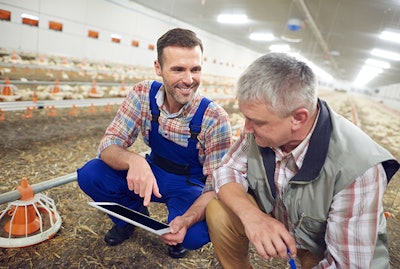
Emerging technologies like artificial intelligence could help poultry operators leverage data to predict welfare and health issues, Simon Cohen said during the Midwest Poultry Federation Convention's virtual show.
“We’re in a disruptive reality of today’s world, dealing with climate change, COVID-19, lab-grown meat, veganism, resource utilization, poultry welfare, regulatory pressures and changing consumer perceptions. What consumers see and what they think plays an important role in protein production,” explained Cohen, the Chief Marketing and Sales Officer for software company M-Tech Systems.
“We talk a lot about data in this industry. Data has always been crucial, but it’s more visible nowadays.”
Artificial intelligence
Many poultry operators turn to artificial intelligence to process and help streamline the large amounts of data collected with digital technologies and sensors.
“When we talk about artificial intelligence and how we move data, we can see examples in everyday life. For example, Uber, Alexa, Netflix, Google Maps and even professional sports all leverage big data with artificial intelligence,” Cohen said.
“In data, noise is bad data. Artificial intelligence can clean the data. Imagine bird weight. Thousands of birds can jump on the scales. How many of those data points are right, clean, real? That’s what artificial intelligence can do.”
Going from reactive to proactive
The streamlined data can be used to create models that help poultry farmers and operations implement better bird management practices through precision farming.
“In the past, we used data from history to try to make predictions. But it was never truly accurate,” said Cohen.
“Conversely, a predictive model looks forward with accuracy, for example, forecasting the weight of the birds. Machines can be trained to identify the difference between a healthy bird and an inflamed bird. Imagine sending an alert to the farmer, the veterinarian, the integrator or whomever is responsible saying that they must go to this farm because something is wrong,”
Cohen will discuss more ways to leverage the Internet of Things (IoT) and machine learning to predict flock performance at the Virtual Poultry Tech Summit, scheduled for October 20-22, 2020. This one-of-a-kind online event facilitates the transition of innovation technologies from researchers and entrepreneurs into commercial applications for the benefit of the poultry industry. Make plans to attend and take a look at the future of the industry.
Registration for the 2020 Virtual Poultry Tech Summit is now open.
Like what you just read? Sign up now for free to receive the Poultry Future Newsletter.


















